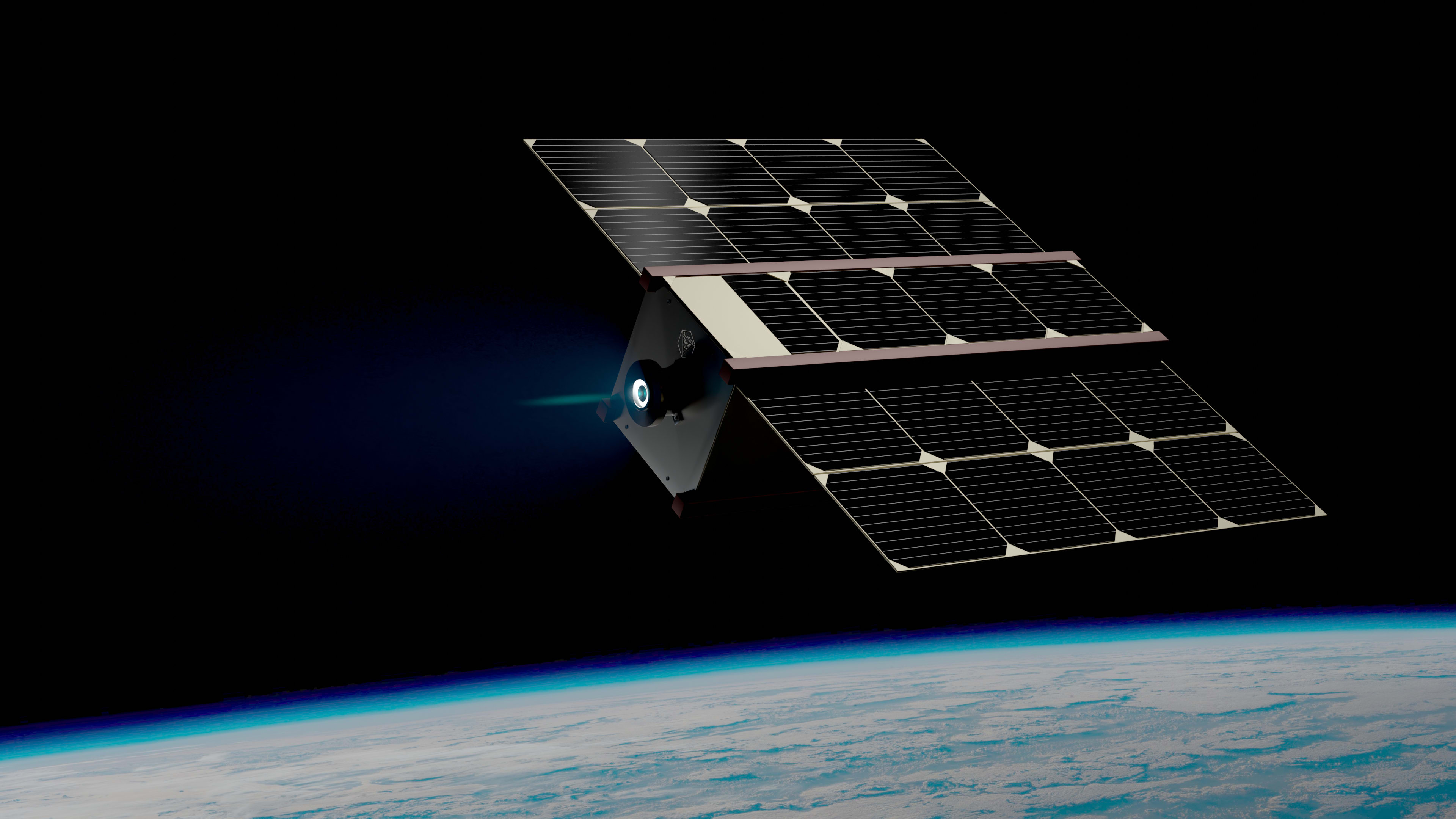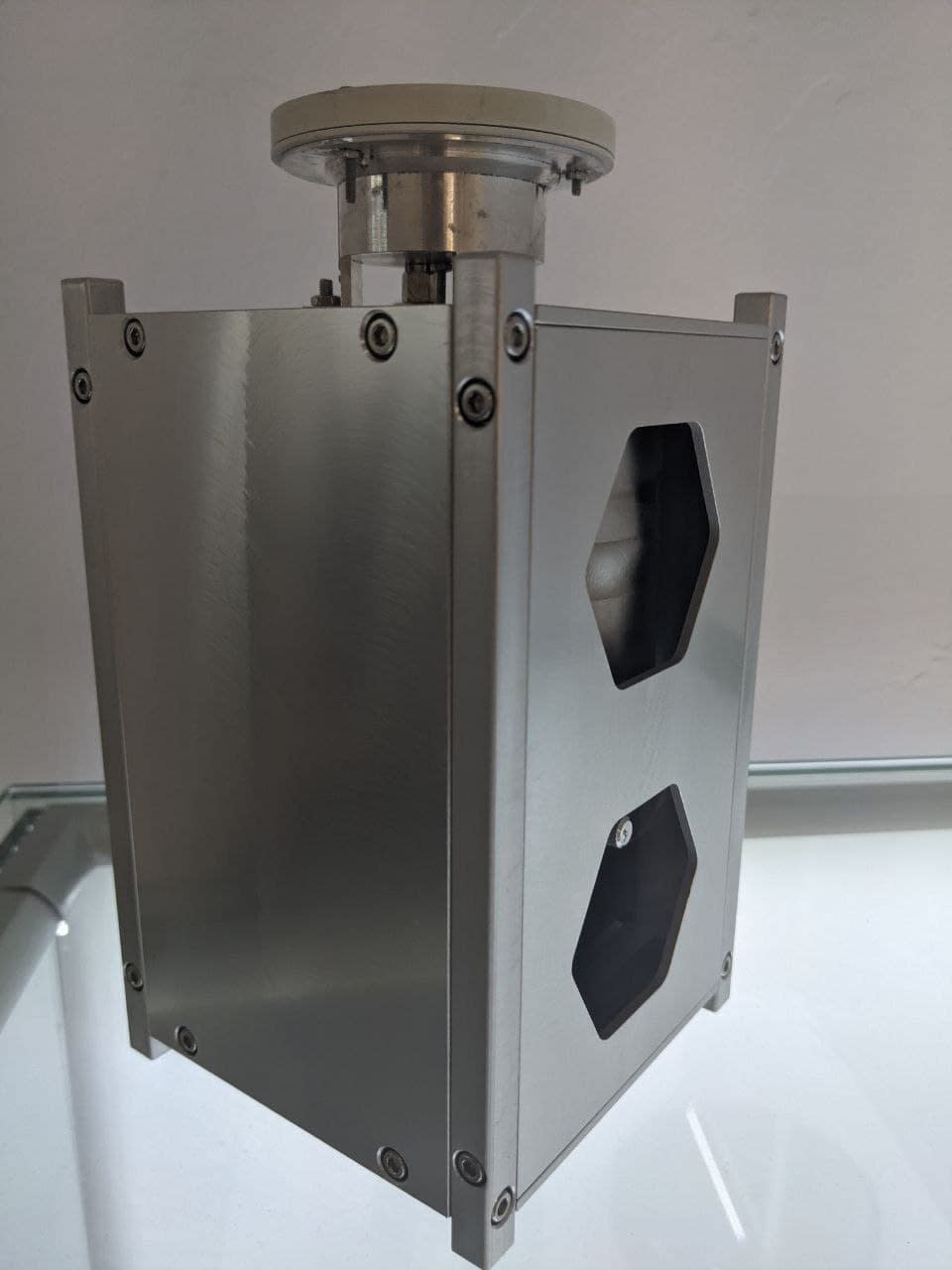

A three-dimensional image rendering of a satellite, powered by Singapore start-up Aliena’s engine, in Earth’s orbit.
- A nano-satellite fitted with a lightweight engine developed by a Nanyang Technological University start-up was deployed into space on Jan 14, 2022
- The satellite was built by a space tech start-up from the National University of Singapore
- It was part of a space mission launched from the United States by private rocket company SpaceX
- As more private companies venture into space, smaller and lower-cost satellites are seeing an increased demand
SINGAPORE — A satellite fitted with an engine developed by a Nanyang Technological University (NTU) start-up was deployed successfully on Friday (Jan 14) during a space mission launched from the United States by private rocket company SpaceX.
The nano-satellite, weighing 4kg, was developed by NuSpace, a Singaporean space tech start-up under the National University of Singapore (NUS).
It carried NTU start-up Aliena's engine, which weighed less than 2kg.
NTU and Aliena said that the engine weighs “less than two cartons of milk” and can fit into a 10cm-by-10cm-by-10cm cube, compared with conventional engines, which tend to be much larger and heavier.
Despite its size, the engine is highly fuel-efficient and allows small satellites to move in space with a force of as little as what “an ant needs to take a few steps forward”, they said.
The nano-satellite was among dozens of other satellites sent into orbit during the SpaceX Falcon 9 rocket’s Transporter-3 mission, which launched from Cape Canaveral Space Force Station in Florida, US on Friday.
SpaceX is owned by Tesla chief Elon Musk.
The launch was part of SpaceX’s “rideshare" programme, which started in 2019 to meet a rising demand for deploying smaller satellites.
As more private companies board the space bandwagon, smaller satellites are becoming more popular because they are much cheaper.
Mr George-Cristian Potrivitu, co-founder and chief technology officer of Aliena, said: “Private companies cannot afford to put all their resources in one single satellite and take the risk of sending up an enormous satellite that costs millions of dollars.
“So the idea is to put up smaller ones that are much cheaper.”

Aliena’s engine, called a Hall effect thruster.
Called a Hall effect thruster, Aliena’s engine is a type of ion thruster, where ions from the propellant are accelerated by an electric field.
The Soviet Union first developed and deployed it into space in the 1960s. Though highly reliable, these types of engines were initially not suited for smaller satellites.
"This kind of technology has limitations, because it’s difficult to scale such a device to a very small level,” Mr Potrivitu said.
Dr Mark Lim, Aliena's co-founder and chief executive officer, said that the team saw a need in the market, for which they could provide new solutions.
They sought to innovate by scaling down the size of these engines and seeking better fuel efficiency.
But the team acknowledged that there is a limit to how small satellites should become.
Using the analogy of a mobile phone, Dr Lim, who is also adjunct principal investigator at NTU's Energy Research Institute, said: “We start off with huge phones, but over the years, it starts getting smaller and smaller. It’s all thanks to the miniaturisation of technology. But at one point, it becomes too small and it’s hard to use.
“So it’s really about reaching that sweet spot.”
Aliena is working towards developing microsatellites, which are slightly larger nano-satellites.
These will allow for more meaningful data sets to be acquired and passed on to its customers, which come from various industries such as agriculture, maritime, aviation, security and defence.
Moving forward, Aliena also hopes to provide high-resolution images by enabling satellites to fly closer to Earth using the engines that it develops.
The satellite sent into orbit on Friday, developed by NuSpace, took three years to complete.
It is an Internet of Things (IoT) satellite, which helps people send and receive signals on IoT devices, such as SOS buttons and water-quality sensors.
Mr Ng Zhen Ning, CEO of NuSpace, came up with the idea of building an IoT satellite after he travelled to the US.
He was hiking in the Grand Canyon when one of his friends twisted his ankle.
As the cellular reception was bad, they had difficulty contacting anyone.
"That inspired me and I thought, 'What if we can have a relatively cost-effective way of sending an SOS signal, so that somebody can save us'?"